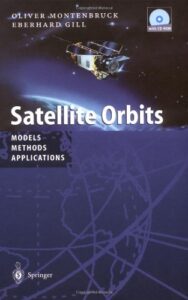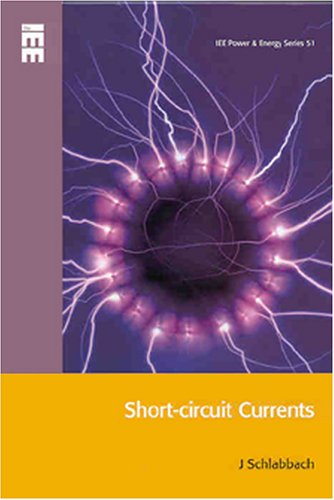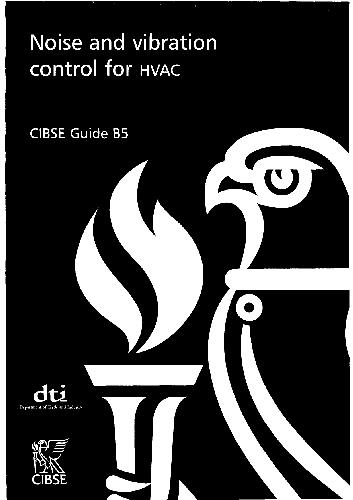| Book Name: | Satellite Orbits Models Methods and Applications |
| Language: | English |
| Format: | |
| Free Download: | Available |
Satellite Orbits Models, Methods, and Applications by Oliver Montenbruck and Eberhard Gill | PDF Free Download.
| Book Details : | |
|---|---|
| Language | English |
| Pages | 384 |
| Format | |
| Size | 7.44 MB |
Satellite Orbits Models Methods and Applications

Satellite Orbits Contents
- Around the World in a Hundred Minutes
- Introductory Astrodynatnics
- Force Model
- Numerical Integration
- Time and Reference Systems
- Satellite Tracking and Observation Models
- Linearization
- Orbit Determination and Parameter Estimation
Preface to Satellite Orbits Models Methods and Applications PDF
Satellite Orbits Models, Methods, and Applications has been written as a comprehensive textbook that guides the reader through the theory and practice of satellite orbit prediction and determination. Starting from the basic principles of orbital mechanics, it covers elaborate force models as well as precise methods of satellite tracking and their mathematical treatment.
Many numerical algorithms used in present-day satellite trajectory computation are described in detail, with proper focus on numerical integration and parameter estimation.
The wide range of levels provided renders the book suitable for an advanced undergraduate or graduate course on spaceflight mechanics, up to a professional reference in navigation, geodesy, and space science.
Furthermore, we hope that it is considered useful by the increasing number of satellite engineers and operators trying to obtain a deeper understanding of flight dynamics.
The idea for this book emerged when we realized that documentation on the methods, models and tools of orbit determination was either spread over numerous technical and scientific publications or hidden in software descriptions that are not generally accessible to a wider community.
Having worked for many years in the field of spaceflight dynamics and satellite operations, we tried to keep in close touch with questions and problems that arise during daily work and to stress the practical aspects of orbit determination.
Nevertheless, our interest in the underlying physics motivated us to present topics from first principles, and make the book much more than just a cookbook on spacecraft trajectory computation.
With the availability of powerful on the ground and onboard computers; as well as increasing demands for precision, the need for analytical perturbation theories has almost been replaced by a purely numerical treatment of the equations of motion.
We, therefore, focus on models and methods that can be applied within a numerical reconstruction of the satellite orbit and its forecast.
As a consequence, topics like orbit design, long-term orbit evolution, and orbital decay are not addressed specifically, although the required fundamentals are provided.
On the other hand, geodesic satellite missions have reached an unprecedented level of position accuracy with a need for very complex force and measurement models, which could not always be covered in full detail.
In any case, references to background information are given, so as to allow the reader easy access to these specific areas.
Each chapter includes exercises at varying levels of complexity, which aim at an additional practice of the presented material or address supplementary topics of practical interest.
Where possible, we have tried to focus on problems that high- light the underlying physicals models or algorithmic methods, rather than relying on purely numerical reference examples.
In most cases, the exercises include a comprehensive description of the suggested solution and the numerical results.
These are either derived directly from equations given in the text or based on sample computer programs.
This book comes with a CD-ROM containing the C++ source code of all sample programs and applications and relevant data files.
The software is built around a powerful spaceflight dynamics library, which is likewise provided as a source code. For the sake of simplicity we have restricted the library to basic models, but emphasized transparent programming and in-code documentation.
This, in turn, allows for an immediate understanding of the code and paves the way for easy software extensions by the user. Free use of the entire software package including the right for modifications is granted for non-commercial purposes.
Therefore, readers, students, and lecturers are encouraged to apply it in further studies and develop new applications.
We assume that the reader is familiar with computer programming, but even inexperienced readers should be able to use the library functions as black boxes.
All source code is written in C++, nowadays a widely-used programming language and one which is readily available on a variety of different platforms and operating systems.
We want to thank Springer-Verlag for their cordial cooperation and interest during the process of publishing this book.
Our thanks are also due to all our friends and colleagues, who, with their ideas and advice, and their help in correcting the manuscript and in testing the programs, have played an important role in the successful completion of this book.
Real mission data sets for the application programs have kindly been provided by the GPS/MET project and the Flight Dynamics Analysis Branch of the Goddard Space Flight Center.
Numerous agencies and individuals have contributed images for the introduction of this book, which is gratefully acknowledged.
Download Satellite Orbits: Models, Methods and Applications PDF
Author(s): Oliver Montenbruck, Eberhard Gill
Publisher: Springer, Year: 2005
ISBN: 354067280X,9783540672807
Download Satellite Orbits Models Methods and Applications in PDF Format For Free.
Related More Books
See More POST On : Engineering Books









![[PDF] Draw Buildings and Cities in 15 Minutes Draw Buildings and Cities in 15 Minutes pdf](https://www.freepdfbook.com/wp-content/uploads/2021/06/Draw-Buildings-and-Cities-in-15-Minutes-218x150.jpg)








![[PDF] Digital Image Processing An Algorithmic Introduction Using Java Digital Image Processing An Algorithmic Introduction Using Java](https://www.freepdfbook.com/wp-content/uploads/2022/06/Digital-Image-Processing-An-Algorithmic-Introduction-Using-Java.jpg)




![[PDF] 43 Years JEE ADVANCED + JEE MAIN Chapterwise & Topicwise Solved Papers 43 Years JEE ADVANCED (1978-2020) + JEE MAIN Chapterwise & Topicwise Solved Papers Physics PDF](https://www.freepdfbook.com/wp-content/uploads/2022/03/43-Years-JEE-ADVANCED-1978-2020.jpg)

![[PDF] Problems in Physical Chemistry for JEE (Main & Advanced) Problems in Physical Chemistry for JEE (Main & Advanced) Free PDF Book Download](https://www.freepdfbook.com/wp-content/uploads/2022/03/Problems-in-Physical-Chemistry-for-JEE-Main-Advanced.jpg)
![[PDF] Engineering Physics (McGraw Hill)](https://www.freepdfbook.com/wp-content/uploads/2021/05/bafc8c2685bb6823a9c56134f7fba5df.jpeg)

![[PDF] Engineering Chemistry By Shashi Chawla](https://www.freepdfbook.com/wp-content/uploads/2022/05/Theory-And-Practicals-of-Engineering-Chemistry-By-Shashi-Chawla-free-pdf-book.jpeg)
![[PDF] Chemistry: An Introduction to Organic, Inorganic & Physical Chemistry Chemistry: An Introduction to Organic, Inorganic & Physical Chemistry](https://www.freepdfbook.com/wp-content/uploads/2022/04/Chemistry-An-Introduction-to-Organic-Inorganic-Physical-Chemistry.jpg)
![[PDF] Essentials of Physical Chemistry Essentials of Physical Chemistry Free PDF Book by Bahl](https://www.freepdfbook.com/wp-content/uploads/2022/04/Essentials-of-Physical-Chemistry-bahl.jpg)
![[PDF] Biological control of plant-parasitic nematodes: soil ecosystem management in sustainable agriculture Biological control of plant-parasitic nematodes: soil ecosystem management in sustainable agriculture](https://www.freepdfbook.com/wp-content/uploads/2022/05/Biological-control-of-plant-parasitic-nematodes-soil-ecosystem-management-in-sustainable-agriculture.jpg)
![[PDF] Human Anatomy: Color Atlas and Textbook Human Anatomy: Color Atlas and Textbook Free PDF Book](https://www.freepdfbook.com/wp-content/uploads/2022/05/Human-Anatomy-Color-Atlas-and-Textbook.jpg)
![[PDF] Concepts of Biology Book [Free Download]](https://www.freepdfbook.com/wp-content/uploads/2022/05/Concepts-of-Biology.jpg)
![[PDF] Essentials of Biology [Free Download] Essentials of Biology Free PDF BOok Download](https://www.freepdfbook.com/wp-content/uploads/2022/05/Essentials-of-Biology-Free-PDF-Book-Downlaod.jpg)
![[PDF] Human Biology Book [Free Download]](https://www.freepdfbook.com/wp-content/uploads/2022/05/PDF-Human-Biology-Book-Free-Download.jpg)


